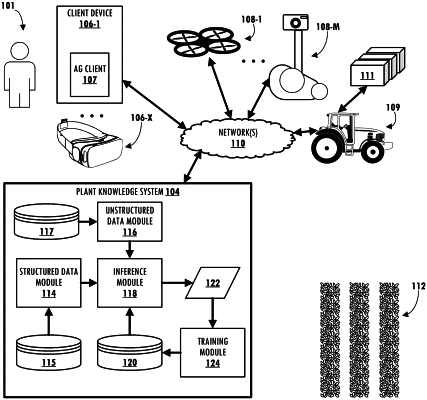| CPC G06F 40/30 (2020.01) [G06F 40/126 (2020.01); G06N 3/042 (2023.01); G06N 3/045 (2023.01); G06V 10/82 (2022.01); G06V 20/188 (2022.01); G10L 15/1815 (2013.01); G10L 15/22 (2013.01)] | 20 Claims |

|
1. A method implemented using one or more processors, the method comprising:
obtaining one or more natural language textual snippets, each natural language textual snippet describing one or more environmental or managerial features of an agricultural field that exist during a crop cycle;
encoding, using a sequence encoder machine learning model, the one or more natural language snippets into one or more semantic embeddings in embedding space, wherein the one or more semantic embeddings semantically represent the one or more environmental or managerial features of the agricultural field;
quantifying an amount of ambiguity of the encoding of the one or more natural language snippets into the one or more embeddings;
generating, using one or more phenotypic machine learning models one or more phenotypic predictions about the agricultural field based on the one or more semantic embeddings, the amount of ambiguity, and additional structured data about the agricultural field, the one or more phenotypic machine learning models to assign a greater weight to a first semantic embedding generated from an unambiguous natural language snippet than to a second semantic embedding generated from an ambiguous natural language snippet, wherein the structured data includes sensor data gathered by one or more sensors carried through the agricultural field by one or more agricultural vehicles, and the one or more of the phenotypic predictions are generated using the sensor data; and
causing output to be provided at one or more computing devices, wherein the output is based on one or more of the phenotypic predictions.
|